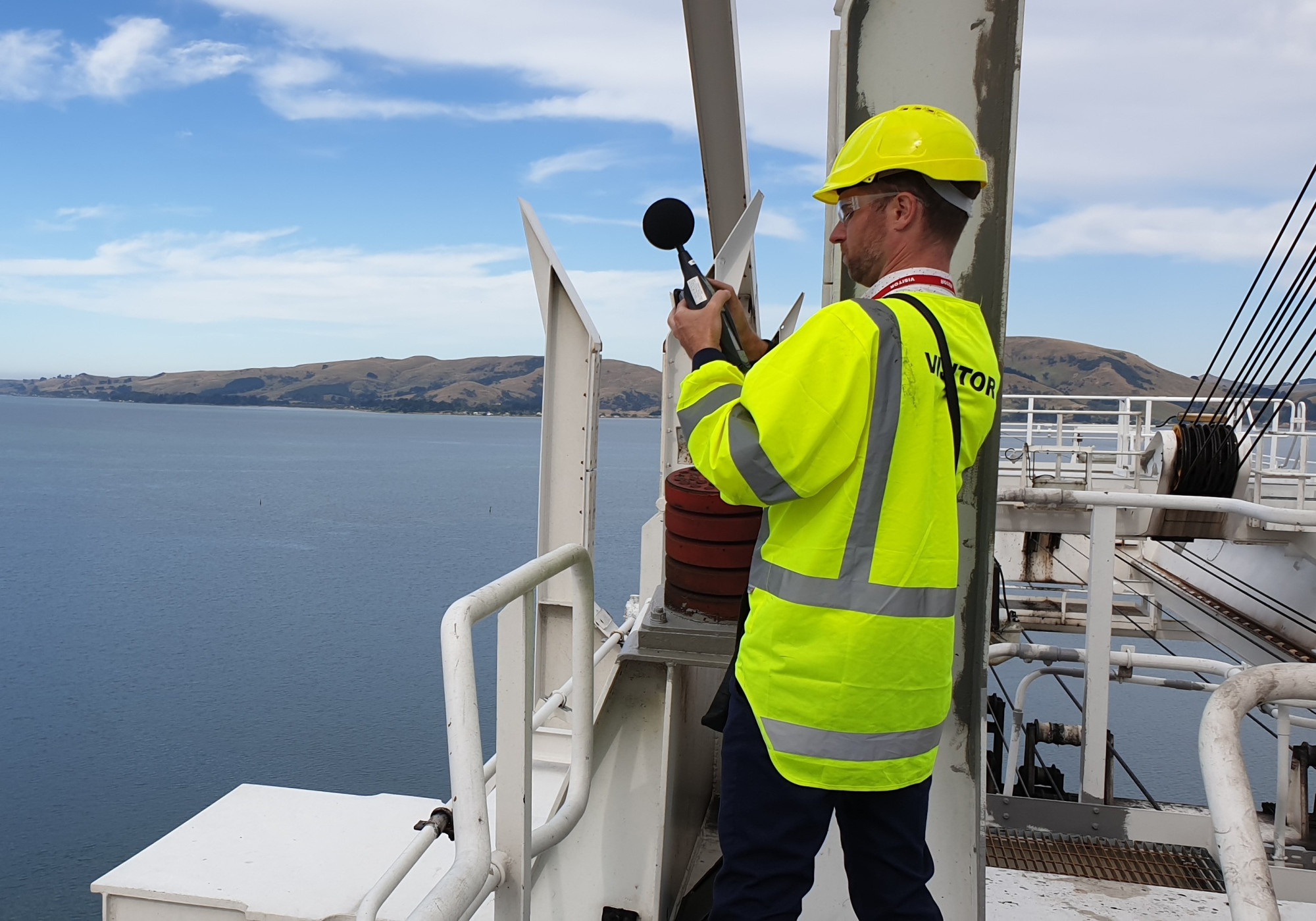Measuring noise from Port Otago

While bangs and crashes are relatively easy to pick out and measure, it’s harder to reliably measure the ”hum” of the port. This is because they are partly masked by other noise sources including the railway line, local road traffic and coastal weather and wave noise.
Experts have developed a standardised way to measure and predict port noise (New Zealand Standard NZS 6809:1999). Experts use computer modelling to predict a five-day average noise level of a busy period of port activity (including a 10 decibel penalty at night). The noise model is used to create lines on a map called noise contours. These contour lines represent the boundaries that noise levels are predicted to be within. The experts model these contours for the current port operation and for planned future developments. This helps us understand how the noise levels may change and what measures need to be put in place to manage that noise.
At Port Otago, noise is measured continuously at several monitoring locations to check that the predicted noise levels represent the noise coming from the port.